Due to age, storage and usage, archive and library collections may be soiled and discoloured, making it difficult to tell the difference between mould growth and historic dirt deposits. As such, identification of mould is not always straightforward. However, there are several key characteristics to look out for which may indicate its presence within your collections.
Common visual indicators can include:
- Staining, mottling and/or discolouration of the affected surface, frequently in a circular pattern and in a variety of colours (Fig.2-4)
- Water damage and/or tide marks – where contact with moisture has occurred, mould growth is common (Fig. 5-6)
- Surface deposits – mould that is actively growing, or powdery accretions of dormant mould (Fig. 7-8)
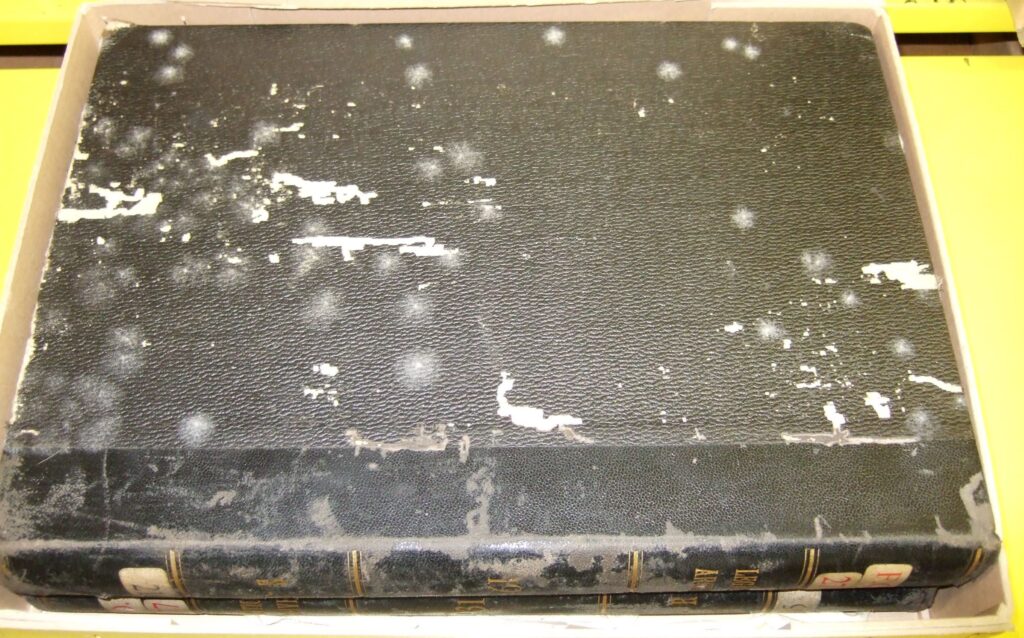
Figure 2 – catalogue reference FO 277/215
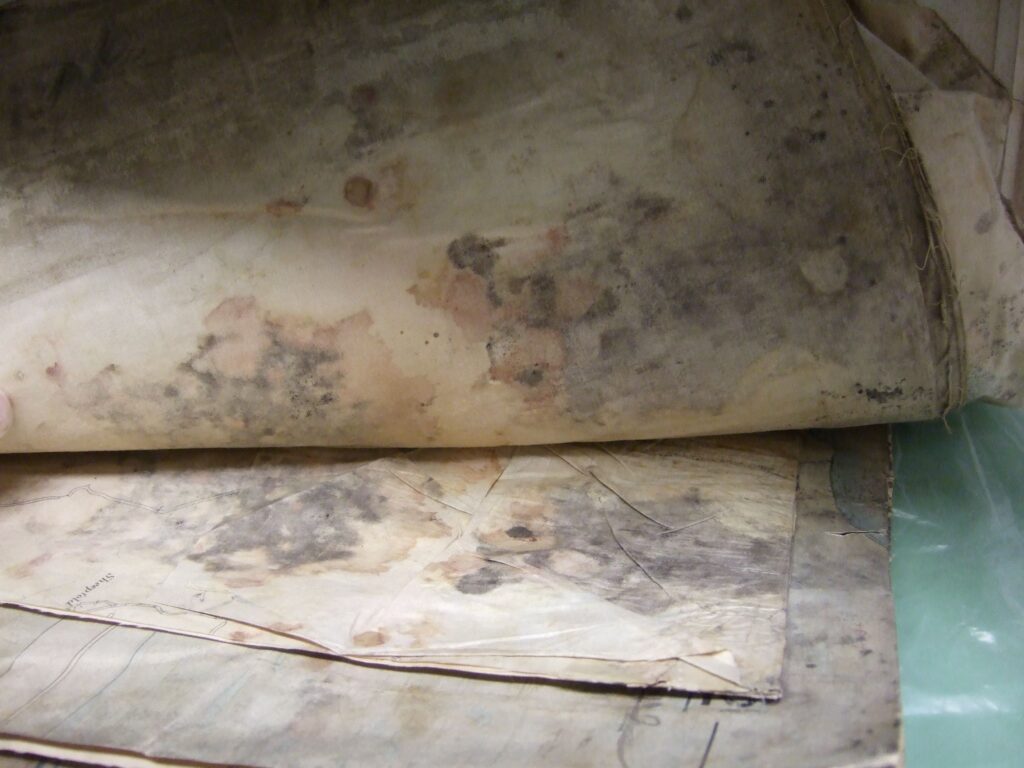
Figure 3 – catalogue reference WO 78/4369
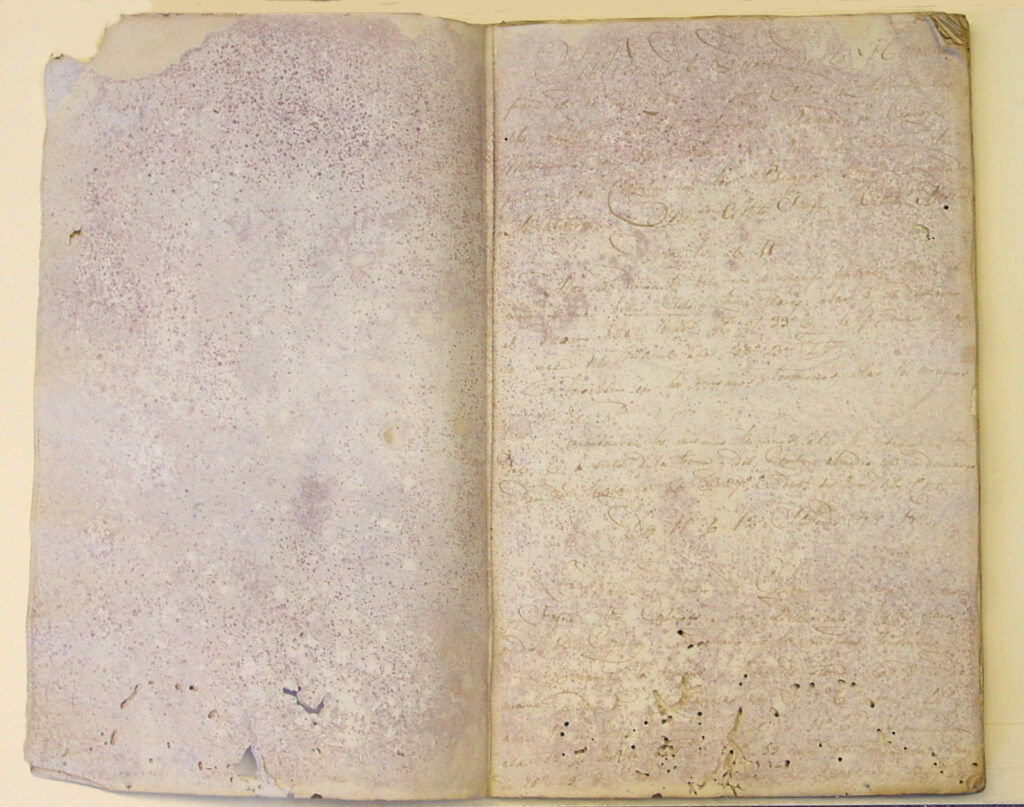
Figure 4 – catalogue reference E 190, piece number unknown
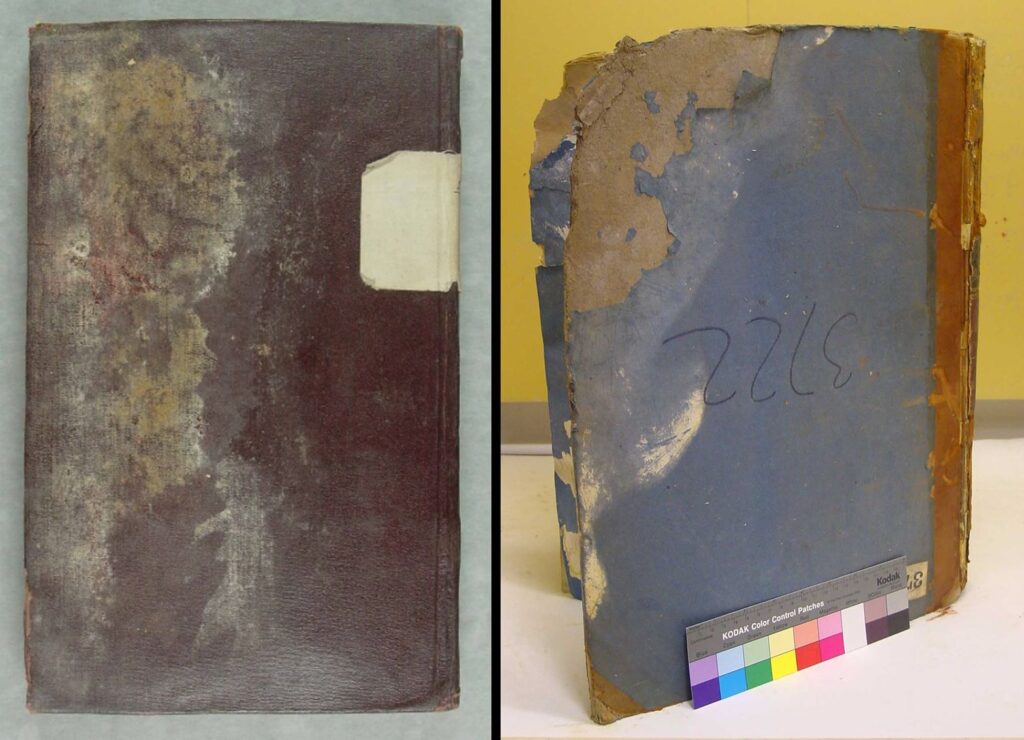
Figures 5 and 6 – IR 58/21229 and ADM 38/3722
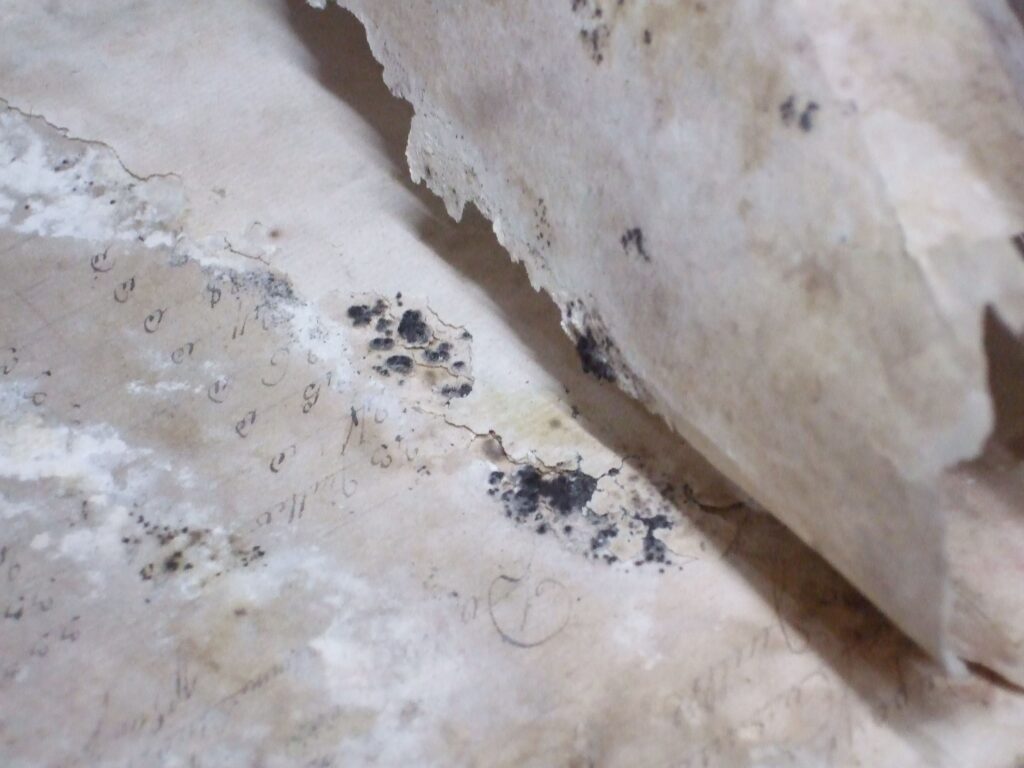
Figure 7 – catalogue reference AO 3/877
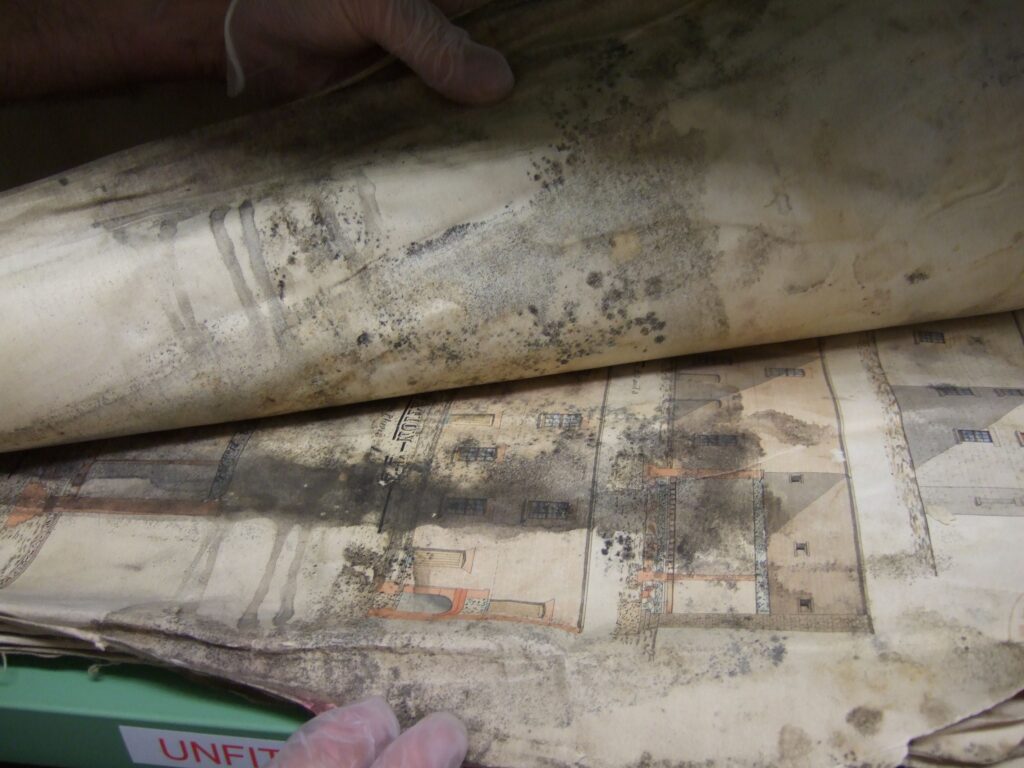
Figure 8 – catalogue reference WO 78/4369
The science of mould has additional information on how mould grows.